1. Overview
Viscount 斎藤 実Saitō MakotoJapanese (October 27, 1858 - February 26, 1936) was a prominent Japanese naval officer and politician who played a crucial role in the early 20th century. Born the son of a samurai from the Mizusawa Domain, Saitō distinguished himself through academic achievement and a rapid ascent through the ranks of the Imperial Japanese Navy, culminating in his promotion to full admiral. He served for eight years as Minister of the Navy, advocating for naval expansion, but was implicated in the Siemens scandal which led to his resignation.
Transitioning to political leadership, Saitō served two terms as Japanese Governor-General of Korea, where he introduced a policy of "cultural rule" in response to the March 1st Movement, aiming to moderate Japan's colonial administration while effectively neutralizing Korean resistance and solidifying Japanese control. His tenure was marked by an assassination attempt by Kang Woo-kyu. Following the May 15 Incident and the assassination of Prime Minister Inukai Tsuyoshi, Saitō became the 30th Prime Minister of Japan, leading a national unity cabinet during a period of intense political instability. His administration recognized Manchukuo and withdrew Japan from the League of Nations, yet also focused on domestic economic recovery. His cabinet eventually resigned due to the Teijin Incident bribery scandal, which many believed was a political conspiracy. In his final public role as Lord Keeper of the Privy Seal, Saitō was assassinated by ultranationalist military officers during the February 26 Incident, targeted as a key figure in the perceived "establishment" that was seen as misleading the Emperor. His life reflects a complex figure who navigated the shift from military to political leadership, attempting to balance modernizing reforms with the realities of Japanese expansionism and internal power struggles, ultimately becoming a victim of rising militarism.
2. Early Life and Education
Saitō Makoto was born on October 27, 1858 (corresponding to December 2, 1858, by the Gregorian calendar) in Mizusawa Domain, Mutsu Province (part of present-day Ōshū City, Iwate Prefecture). His birth name was Tomigoro (富五郎), which he later changed to Makoto (実) after graduating from the Naval Academy. He was the eldest son of Saitō Takayō, a samurai of the Mizusawa Clan, which served the Mizusawa Date clan, a branch of the Date clan that governed the region. The Saitō family held a high position within the Mizusawa Date clan's vassalage, ranking among the top ten families with the "second-tier seating" status and holding the 15th position in the overall hierarchy of 808 vassal families. His father served as an inspector and head of the pages for the Mizusawa Domain and later became an Iwate Prefectural police officer after the Meiji Restoration, dying in 1881. The Saitō family lineage is traced back to Saitō Matashirō Motonaga, a descendant of Fujiwara no Norimochi, who became a retainer of the Haga clan (later the Mizusawa Date clan) after the fall of the Kamakura shogunate, settling in Iwakiri in Miyagi District.
In 1873, Saitō entered the Imperial Japanese Naval Academy (then known as Kaigun Heigakuryo). Although he had previously failed the entrance exam for the Army Cadet School in 1872, he successfully pursued a naval career. He graduated in 1879 as part of the 6th class, ranking third among 17 cadets. He was considered one of the "three geniuses of the Navy" alongside his classmates Yamauchi Manji and Sakamoto Shun'atsu. His significant educational experiences included studying in the United States from September 19, 1884, to October 26, 1888, serving concurrently as a military attaché to the Japanese Legation in Washington D.C. This period in the United States contributed significantly to his international perspective and fluent English, supporting his rise as a self-made figure.
3. Military Career
Saitō Makoto's military career was characterized by rapid advancement and significant contributions to the Imperial Japanese Navy, culminating in his extensive tenure as Minister of the Navy.
3.1. Early Service and Rapid Advancement
Saitō was commissioned as an ensign on September 8, 1882, and subsequently promoted to sub-lieutenant on February 25, 1884. From 1884 to 1888, he served as a military attaché in the United States, an experience that honed his diplomatic skills and deepened his international understanding. Upon his return to Japan in 1888, he joined the Imperial Japanese Navy General Staff. He was promoted to lieutenant on July 14, 1886.
His rapid rise continued with a promotion to lieutenant commander on December 20, 1893, after which he served as executive officer on the cruiser Izumi and the battleship Fuji. During the First Sino-Japanese War, Saitō commanded the cruisers Akitsushima and Itsukushima. His distinguished service led to swift promotions: to commander on December 1, 1897, and to captain on December 27 of the same year. He then served as Vice Minister of the Navy from November 10, 1898, and was promoted to rear admiral on May 20, 1900.
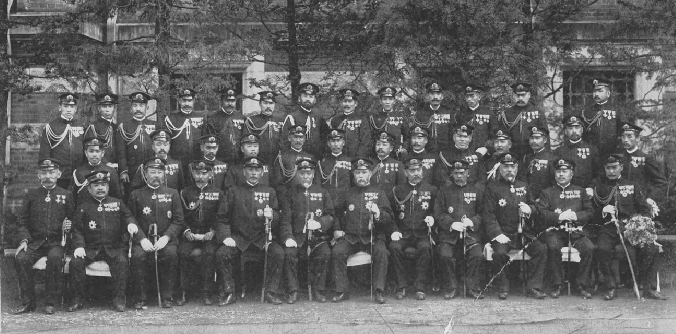
During the Russo-Japanese War, Saitō again served as Vice Minister of the Navy, concurrently holding positions as Director of the Naval Affairs Bureau and head of the Shipbuilding Department. He played a crucial role in supporting Yamamoto Gonnohyōe, the Minister of the Navy, while many other high-ranking naval officers were engaged on the front lines. He was promoted to vice admiral on June 6, 1904. For his contributions, he received the Order of the Rising Sun (1st class) in 1906. He was also appointed head of the Naval Education Headquarters from February to November 1905.
4. Political Career
After his naval career, Saitō Makoto transitioned into prominent political roles, serving as Governor-General of Korea and later as Prime Minister of Japan, navigating periods of significant domestic and international turmoil.
4.1. Governor-General of Korea
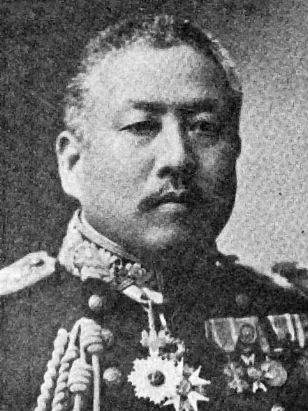
In September 1919, Saitō was appointed as the third Japanese Governor-General of Korea. This appointment came immediately after the height of the March 1st Movement, a widespread Korean independence protest that exposed the brutal and repressive nature of Japan's previous "martial rule" (`武断政治Budan SeijiJapanese`). Saitō, a figure known for his moderation and international outlook, was brought in to implement a new policy of "cultural rule" (`文化政治Bunka SeijiJapanese`), which aimed to soften the harsh military governance and pacify Korean resistance.
His arrival in Korea was met with immediate defiance. On September 2, 1919, upon disembarking at Seoul Station (then known as Namdaemun Station) in Seoul, Saitō was subjected to an assassination attempt by Kang Woo-kyu, a radical Korean nationalist who threw a bomb. Saitō survived the attack, which only further highlighted the deep-seated opposition to Japanese colonial rule.
Saitō served two non-consecutive terms as Governor-General of Korea: from 1919 to 1927, and again from 1929 to 1931. His "cultural rule" policies marked a shift from overt military repression to a more subtle form of control. Under this policy, some limited concessions were made, such as the relaxation of certain censorship laws, permission for Koreans to publish newspapers in their own language, and an increase in Korean participation in local government. Saitō also promoted educational reforms and sought to foster a sense of "cooperation" between Japanese and Koreans.
However, the "cultural rule" was widely criticized by Korean nationalists and historians as a facade for strengthening colonial control and suppressing independence aspirations more effectively. While it appeared to offer more freedoms, the underlying goal remained the firm integration of Korea into the Japanese Empire. The police force was expanded, and repressive laws like the Public Order Maintenance Act were enacted to quash any organized resistance or dissent. Economic exploitation continued, with Japan continuing to extract resources and labor from Korea for its own benefit. Critics noted that the reforms were largely superficial, failing to address the fundamental issues of political self-determination and economic injustice. For instance, while limited Korean participation in local governance was permitted, real power remained concentrated in the hands of Japanese officials.
Despite these criticisms, some Japanese and certain international observers, such as British colonial expert Allen Ireland in 1926, offered positive assessments of Saitō's administration. Ireland stated that Saitō was generally regarded as fair and tolerant, earnestly striving to govern Korea with integrity, and achieving notable reforms, particularly in education. Ireland also observed Saitō's efforts to foster friendly relations between Japanese and Koreans while firmly opposing any movements towards independence.
During his first term, Saitō was awarded the Order of the Paulownia Flowers in 1924. On April 9, 1925, his peerage title was elevated to that of `子爵shishakuJapanese` (viscount). In 1927, after his first term as Governor-General, Saitō was a member of the Japanese delegation at the Geneva Naval Conference on Disarmament and later became a privy councillor. He was reappointed Governor-General in 1929 and served until 1931, continuing to implement his policies.
4.2. Prime Minister of Japan
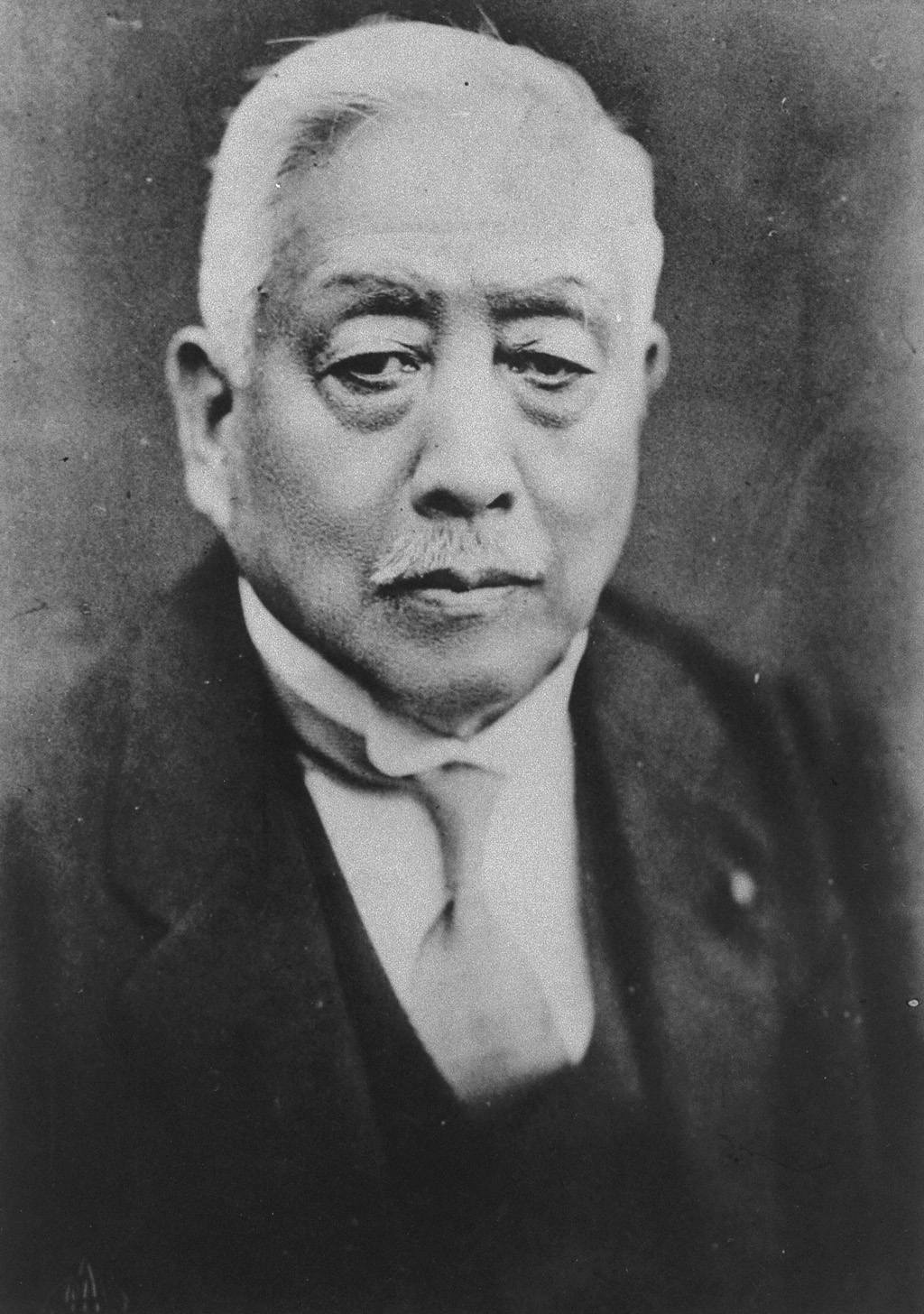
Following the assassination of Prime Minister Inukai Tsuyoshi on May 15, 1932, during the May 15 Incident-an act perpetrated by fanatical navy officers who deemed Inukai too conciliatory-Prince Saionji Kinmochi, a prominent `genrō` and close advisor to the Emperor, sought to prevent the nation's further slide toward military dominance. As a compromise, Saitō Makoto, a figure known for his moderate views and international experience, was chosen as Inukai's successor. He was inaugurated as the 30th Prime Minister of Japan on May 26, 1932. From his inauguration until July 6, 1932, he concurrently served as the 47th Minister of Foreign Affairs. Later, from March 3 to July 8, 1934, he concurrently held the position of the 41st Minister of Education.
Saitō's cabinet was a "national unity cabinet," drawing ministers from both the Rikken Seiyūkai and Rikken Minseitō parties. Despite the civilian nature of his government, the influence of the military remained strong. Sadao Araki, a prominent figure in the military's more radical faction, remained as Minister of War and immediately began making demands on the new government.
Saitō's administration faced intense political turmoil and growing militarism, particularly in the wake of the Manchurian Incident, which had erupted in September 1931 due to the actions of the Kwanto Army. On September 15, 1932, Japan formally recognized the independence of Manchukuo through the Japan-Manchukuo Protocol. This controversial move led to international condemnation. When the League of Nations General Assembly rejected Japan's claims and recommendations regarding Manchukuo, Saitō's government formally announced Japan's withdrawal from the League on March 27, 1933.
Despite the escalating militarist actions abroad, Saitō's government also focused on domestic stability. Under the fiscal leadership of Finance Minister Takahashi Korekiyo, his cabinet continued an aggressive fiscal policy. This approach helped Japan recover its economy to pre-Shōwa Depression levels by 1933, ahead of other major nations.
Saitō's tenure as prime minister was relatively long for the tumultuous inter-war period, lasting two years and one month until July 8, 1934. However, his cabinet ultimately resigned en masse due to the Teijin Incident, a major bribery scandal. The scandal involved accusations of impropriety regarding the sale of shares in the Teijin company, a subsidiary of the bankrupt Suzuki Shōten. Sixteen individuals, including Teijin president Takagi Fukuhoro, businessman Nagano Mamoru, Taiwan Bank President Shimada Shigeru, and Vice Minister of Finance Kuroda Hideo, were indicted. The Saitō cabinet took responsibility for the ethical lapse and collectively resigned. Subsequent trials, which lasted 265 sessions, resulted in the acquittal of all accused in October 1937, leading to widespread belief that the incident was a conspiracy orchestrated by factions within the prosecution (particularly those aligned with Hiranuma Kiichirō), army officers, and the right wing of the Rikken Seiyūkai, aiming to bring down Saitō's liberal-leaning government. Saitō was succeeded as prime minister by Keisuke Okada.
4.3. Lord Keeper of the Privy Seal
After his resignation as Prime Minister, Saitō Makoto continued to serve in an important political capacity. On December 26, 1935, he was appointed Lord Keeper of the Privy Seal. In this role, he was a key imperial advisor, responsible for managing the Emperor's private affairs and advising on matters of state, effectively serving as the Emperor's chief aide. This position placed him at the heart of the "establishment" that young, radical Kōdō-ha military officers increasingly saw as corrupting the nation and misleading the Emperor. His tenure in this crucial role was tragically cut short, lasting just over two months until his assassination on February 26, 1936.
5. Character and Political Philosophy
Saitō Makoto was characterized by a blend of strong personal discipline, intellectual prowess, and a pragmatic political philosophy, particularly evident in his approach to colonial administration.
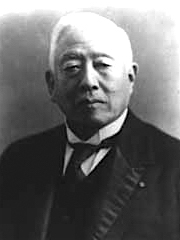
One of his most notable personal traits was his exceptional fluency in English. Saitō could converse with foreign dignitaries without an interpreter for most unofficial engagements and even maintained a personal diary in English. This linguistic skill and his extensive experience as a military attaché in the United States contributed to his reputation as an internationalist and a member of the "treaty faction" within the Imperial Japanese Navy, advocating for international cooperation and arms control. He shared a close personal friendship with Finance Minister Takahashi Korekiyo, another pro-Western figure.
Despite a lean physique in his youth, Saitō actively cultivated robust physical health. During his time in the United States, he reportedly had beer delivered to his lodgings daily to build strength, which contributed to his strong constitution. This formidable physical endurance was a hallmark of his character and enabled his remarkable diligence; for example, upon arriving in Korea to assume the Governor-General post, he immediately began official duties the same afternoon. His industriousness was clearly supported by this physical resilience. He was known for being a heavy drinker in his youth, consuming over 1.8 L of sake in a single night. An anecdote recounts how he once appeared before Emperor Meiji after an all-night drinking session and, when asked to play `kemari`, found himself too unsteady to move. Emperor Meiji, though noticing Saitō's state, did not scold him, which greatly impressed Saitō and led him to abstain from alcohol for some time, profoundly learning from the Emperor's forgiving nature.
Saitō was also meticulously organized and a prolific letter writer. He would consistently send thank-you notes for gifts and found it difficult to refuse requests for autographs, often spending his weekends at his villa engaging in calligraphy. He was assiduous in preserving his correspondence and official documents, meticulously sorting them himself. This habit meant he possessed a detailed memory of individuals and rarely made errors in recalling facts. The extensive collection of his letters and documents, largely donated to the National Diet Library, serves as invaluable historical material for modern Japanese history.
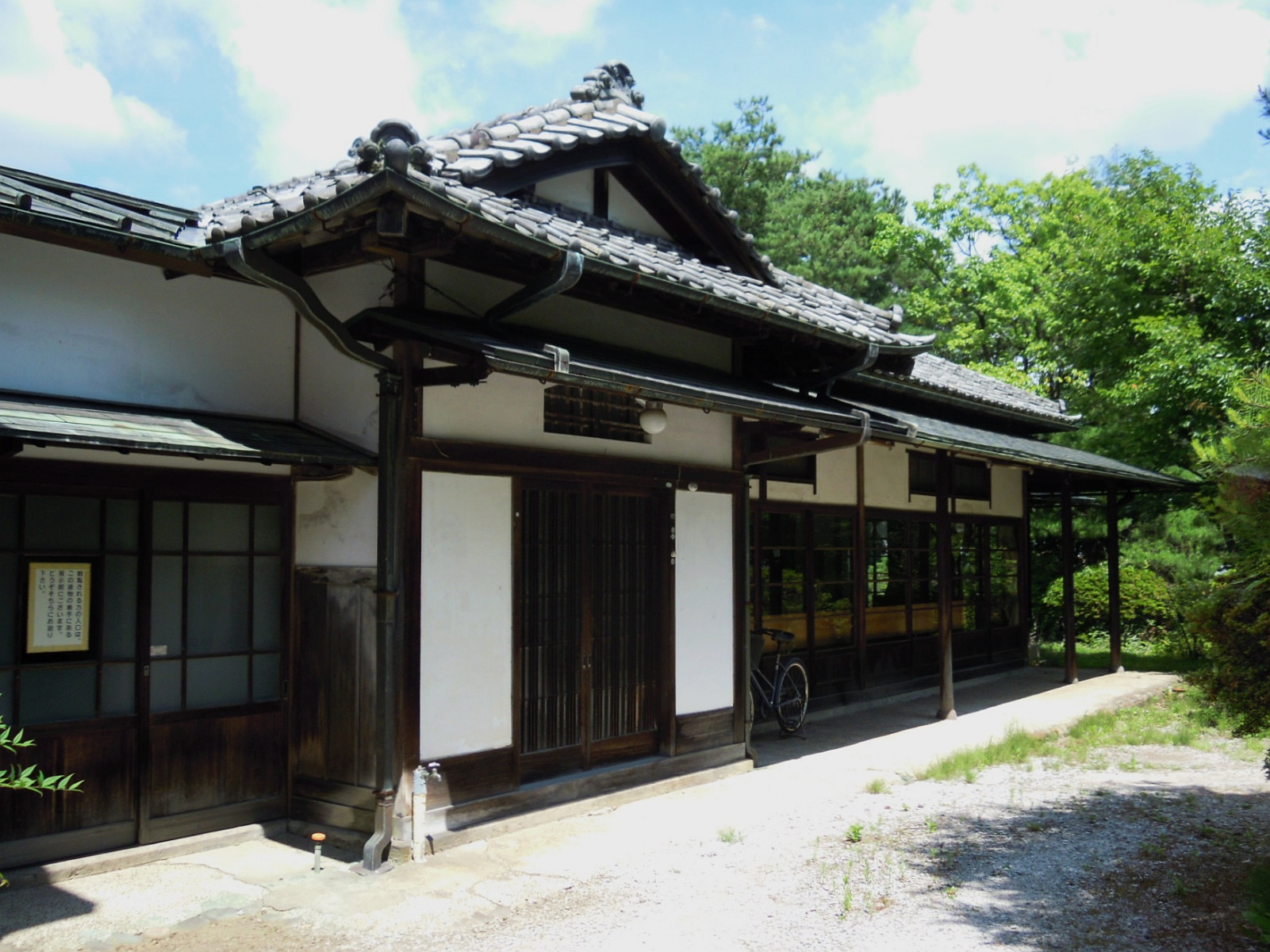
In 1914, Saitō acquired a villa in Shinchi, Ichinomiya-machi, Chiba Prefecture. He purchased a plot of 18 K ft2 (1.65 K m2), approximately 500 tsubo. The land cost around 0.1 JPY per tsubo, and construction cost 20 JPY per tsubo. After resigning as Navy Minister, he spent the majority of the year there, primarily engaged in gardening activities such as pruning pine branches and mending fences, often dressed casually in old clothes, `zori` sandals, and a hand towel tucked into his waist. A local police chief, mistaking him for a groundskeeper, once called him "Grandpa" before realizing his identity and becoming highly flustered. Due to his connection to the area, a votive tablet he donated is displayed at the nearby Tamasaki Shrine.
Regarding his political philosophy, particularly his approach to colonial administration in Korea, Saitō's "cultural rule" (文化政治Bunka SeijiJapanese) was presented as a more enlightened and tolerant alternative to the previous "martial rule" (武断政治Budan SeijiJapanese). The aim was to appease Korean nationalist sentiments and prevent future uprisings like the March 1st Movement by offering superficial reforms while strengthening Japan's grip on the peninsula. Saitō genuinely believed that by fostering education, allowing limited self-governance, and encouraging a sense of "cooperation," he could integrate Koreans more smoothly into the Japanese Empire and neutralize their desire for independence. While this policy was lauded by some as progressive, critics viewed it as a cunning tactic to achieve more effective assimilation and exploitation, demonstrating Saitō's pragmatic approach to maintaining control, even if it meant adjusting visible methods.
6. Assassination
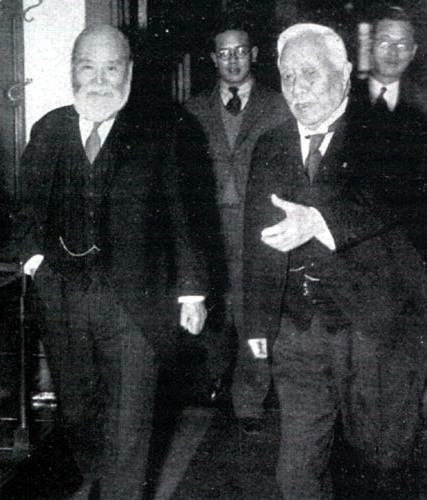
Saitō Makoto's life came to a violent end during the February 26 Incident (Ni Ni Roku Jiken) on February 26, 1936. This attempted coup was staged by a faction of ultranationalist junior officers of the Imperial Japanese Army, primarily affiliated with the `皇道派Kōdō-haJapanese` (Imperial Way Faction). These officers, disillusioned with the perceived corruption of civilian politics and the influence of senior statesmen, targeted leading `重臣JūshinJapanese` (senior statesmen) whom they believed were misleading the Emperor and obstructing a "Shōwa Restoration" (a nationalist revolution that would restore direct imperial rule and eliminate perceived capitalist and liberal influences). Saitō, in his role as Lord Keeper of the Privy Seal, was a prime target, representing the very establishment they sought to overthrow.
Days before the incident, the Tokyo Metropolitan Police Department had warned Saitō of potential unrest within the Army and advised him to either avoid returning to his private residence or to significantly reinforce its security. Although the details of the planned coup were highly secret, some information had leaked, leading the police to anticipate that young Army officers might soon take action, with Saitō being a key target. However, Saitō calmly dismissed the warning, reportedly stating, "Don't worry. I don't care if I'm killed. It's fine to be killed."
On the evening before the assassination, Saitō had attended a dinner at the residence of Joseph Grew, the U.S. Ambassador to Japan, a known Japanophile. After dinner, he watched the American film The Merry Widow. Although he had initially planned to leave early and go to his villa, he enjoyed the conversation with Grew and stayed to watch the entire film, returning home late and postponing his trip to the villa until the next day. Had Saitō adhered to his original plan and left Tokyo, he might have escaped the assassination.
In the pre-dawn hours of February 26, 1936, a group of approximately 150 soldiers, led by Lieutenant Sakai Nao, Second Lieutenant Takahashi Tarō, and Second Lieutenant Yasuda Yū, launched a coordinated assault on Saitō's residence in Yotsuya, Tokyo. The soldiers were heavily armed with four heavy machine guns, eight light machine guns, rifles, and pistols. Dividing into two groups, they stormed the Saitō home. Saitō, who was in his room, offered no resistance but was brutally killed. His adopted son, Saitō Hitoshi, later recounted the events through his wife's brother, the writer Arima Yoriyoshi, who was staying next door at the time. According to his wife, Haruko, the soldiers opened fire with light machine guns on Saitō, who was sitting cross-legged on his bed. His body fell from the bed, and the soldiers continued to shoot him. Haruko, attempting to protect her husband, threw herself over his body, shouting, "Shoot me too!" She was wounded by a bayonet when the soldiers checked Saitō's body to confirm his death. Haruko Saitō survived the attack and lived a long life, passing away in 1971 at the age of 98, reportedly retaining vivid memories of the incident until her last days.
Saitō's body bore the horrific evidence of the attack, with 47 bullet wounds and dozens of stab wounds from swords. He was 78 years old at the time of his death. Emperor Shōwa was reportedly enraged by the assassination of trusted senior statesmen, including Saitō, and swiftly ordered the suppression of the rebel forces.
Saitō Makoto was interred at both Tama Cemetery in Tokyo and the Oyama-zaki Saitō family cemetery in his hometown. His funeral and memorial service were held on March 22, 1936, at Tsukiji Hongan-ji. Kido Kōichi, who served as a pallbearer, remarked that the event resembled a "national funeral." Unusually, Emperor Showa sent his condolences to Saitō's family. Saitō's personal letters and official documents are preserved at the Saitō Makoto Memorial Museum in Ōshū, Iwate, and the National Diet Library in Chiyoda-ku, Tokyo, providing invaluable historical records.
7. Posthumous Assessment and Criticism
Saitō Makoto's long and varied career has been subject to diverse historical and social evaluations, encompassing both recognition for his contributions and significant critique, particularly regarding his colonial policies and involvement in political scandals.
7.1. Positive Assessments
Saitō is often lauded for his pivotal role in modernizing the Imperial Japanese Navy and for his efforts to stabilize Japan's political landscape during a period of intense turmoil. His eight-year tenure as Minister of the Navy is recognized for its focus on naval expansion and technological advancement, which significantly strengthened Japan's military capabilities. As Prime Minister, leading a national unity cabinet after the May 15 Incident, he is credited with attempting to bridge the deep divides within Japanese politics and society, even while navigating the rising influence of militarism. His government's economic policies, particularly those continued under Finance Minister Takahashi Korekiyo, successfully brought Japan out of the Shōwa Depression earlier than other major nations, restoring a measure of economic stability.
His diplomatic skills and international outlook, honed during his time in the United States and at the Geneva Naval Conference, also drew praise. Some contemporaries viewed him as a moderate and a bulwark against the extreme nationalism and militarism that eventually consumed Japan. His stoicism and composure in the face of his impending assassination, as well as his dedication to his duties until the very end, are often highlighted as testaments to his character. Posthumously, he was awarded the Supreme Order of the Chrysanthemum, the highest honor in Japan, reflecting the Emperor's respect and the official recognition of his service.
7.2. Criticism and Controversy
Despite his positive assessments, Saitō Makoto's career is marked by substantial criticism and controversy, particularly concerning his colonial policies in Korea and his involvement in major political scandals.
His two terms as Governor-General of Korea, during which he implemented "cultural rule," are viewed critically by Korean historians and many international scholars. While presented as a more liberal alternative to the previous "martial rule," critics argue that "cultural rule" was a deceptive strategy designed to pacify Korean resistance through superficial reforms while strengthening the underlying colonial apparatus. They point to the expansion of the police force, the enactment of repressive laws like the Public Order Maintenance Act, and continued economic exploitation as evidence that the policy primarily served to tighten Japan's control and neutralize the Korean independence movement more effectively rather than genuinely empower Koreans. The Korean perspective emphasizes that despite minor concessions, the fundamental denial of self-determination and the systematic discrimination against Koreans persisted, making "cultural rule" a more insidious form of assimilation.
Saitō's involvement in the Siemens scandal in 1914 led to his forced resignation as Minister of the Navy, a significant blemish on his otherwise distinguished military career. Although he was not directly accused of receiving bribes, his implication in the scandal highlighted issues of corruption within the military establishment he oversaw.
Furthermore, his cabinet's mass resignation in 1934 due to the Teijin Incident bribery scandal generated considerable controversy. While all accused were eventually acquitted, the incident is widely believed to have been a politically motivated conspiracy orchestrated by elements within the Japanese military and the ultra-nationalist right-wing, aiming to undermine and eventually topple Saitō's relatively liberal and internationalist government. This episode underscored the increasing fragility of civilian governance and the aggressive tactics employed by militarist factions to seize power in the lead-up to World War II.
His decision, as Prime Minister, to recognize Manchukuo and withdraw Japan from the League of Nations is also a point of historical contention. While these actions were carried out under intense pressure from the military, they are seen as pivotal steps that isolated Japan internationally and accelerated its trajectory toward militarism and expansionism.
8. Honours and Decorations
Saitō Makoto received numerous domestic and foreign honours and decorations throughout his distinguished career.
8.1. Peerages
- Baron (`男爵danshakuJapanese`) - September 21, 1907
- Viscount (`子爵shishakuJapanese`) - April 9, 1925
8.2. Domestic Decorations
| Decoration | Class | Date |
|---|---|---|
| Order of the Sacred Treasure | Sixth Class | May 26, 1893 |
| Order of the Golden Kite | Fourth Class | May 23, 1896 |
| Order of the Rising Sun | Sixth Class | May 23, 1896 |
| Order of the Sacred Treasure | Fifth Class | November 25, 1896 |
| Order of the Sacred Treasure | Fourth Class | June 20, 1899 |
| Order of the Rising Sun | Second Class (Gold and Silver Star) | December 27, 1901 |
| Order of the Golden Kite | Second Class | April 1, 1906 |
| Grand Cordon of the Order of the Rising Sun | Grand Cordon | April 1, 1906 |
| Grand Cordon of the Order of the Rising Sun with Paulownia Flowers | Grand Cordon with Paulownia Flowers | February 11, 1924 |
| Supreme Order of the Chrysanthemum | Grand Cordon | February 26, 1936 (posthumous) |
8.3. Foreign Decorations
| Country | Decoration | Class/Rank | Date |
|---|---|---|---|
| France | Ordre des Palmes académiques | Officier | June 19, 1893 |
| United Kingdom | Silver Jubilee Medal | Medal | December 6, 1897 |
| France | Legion of Honour | Commander | April 4, 1901 |
| United Kingdom | Order of the Bath | Honorary Knight Grand Cross (GCB) | May 15, 1906 |
| Kingdom of Prussia | Order of the Red Eagle | 1st Class | February 26, 1907 |
| Kingdom of Italy | Order of Saints Maurice and Lazarus | Knight Grand Class | July 1, 1907 |
| France | Legion of Honour | Grand Officer | December 17, 1907 |
| Korean Empire | Order of the Plum Blossom | Grand Cordon | March 3, 1908 |
| Russian Empire | Order of the White Eagle | - | May 1, 1908 |
| Korean Empire | Emperor of Korea's Commemorative Medal for Southwestern Tour | Medal | April 1, 1910 |
| Netherlands | Order of Orange-Nassau | Knight Grand Cross | May 31, 1911 |
| Chile | Order of Merit | 1st Class | March 22, 1913 |
| Holy See | Order of St. Sylvester | Knight Grand Cross | May 1, 1922 |
| Holy See | Order of Pius IX | Knight Grand Cross | July 7, 1932 |
| Manchukuo | Order of National Foundation Merit | Order | March 1, 1934 |
9. In Popular Culture
Saitō Makoto has been portrayed in various forms of popular culture, particularly in films and television dramas depicting the turbulent period leading up to and during World War II in Japan. These portrayals often highlight his roles as a military leader and a key political figure caught in the escalating militarism of the 1930s.
His appearances include:
- The Emperor and Empress and the Sino-Japanese War (1958 film), portrayed by Toshio Hosokawa
- The Feast (1967 film), portrayed by Heigi Aono
- Day of Youth (1980 film), where he is depicted as the Lord Keeper of the Privy Seal, portrayed by Takeshi Yamamoto
- 226 (1989 film), portrayed by Shin Takagiri
- Oburoshiki (1970 NHK TV drama), portrayed by Yasuo Tanabe
- Wives of the February 26 Incident (1976 NHK TV drama), portrayed by Zenbei Saga
- The Sea Revives (1977 TBS TV drama), portrayed by Kōjiro Kusanagi
- Sanga Moyu (1984 NHK Taiga drama), portrayed by Takeshi Yamamoto
- What Was That War? The Japanese-American War and Hideki Tojo (2008 TBS TV drama), portrayed by Akira Morishita
- Twilight Burn (2009 TV Asahi TV drama), portrayed by Junkichi Orimoto